Completed research projects
Our research focuses on the development, support, and education of young people with deafness/hearing impairment. Here you can find our completed projects.

Our research focuses on the development, support, and education of young people with deafness/hearing impairment. Here you can find our completed projects.


Although children and young people with hearing impairments are particularly vulnerable to sexual violence, this group has received little attention from empirical educational research to date. For this reason, the project "Digital Protection against Sexual Violence against Children and Young People with Hearing Impairments (DigGaH)" focuses on young people with hearing impairments.
The objectives of the project are to conduct empirical research into sexualized violence against children and young people with hearing impairments in the digital space and to subsequently develop prevention and training programs to protect this target group.
A combination of questionnaires and individual interviews is used to gather insights into the prevalence, manifestations, and risk factors of sexualized violence in the digital world among children and young people with hearing impairments. The survey targets 12- to 17-year-old students at schools specializing in hearing impairment.
In order to establish a digital prevention service for young people with hearing impairments, the DGfPI's website"Ben und Stella wissen Bescheid!" (Benand Stella know best!) is being expanded in a participatory, multi-stage process based on qualitative methods. The new version of the website not only meets the requirements for linguistic accessibility, but also caters to the specific needs of children and young people with hearing impairments in terms of content.
In order to anchor protection against sexual violence against young people with hearing impairments at the school level, an evidence-based training program is being developed with the aim of professionalizing educational staff on the topic of "Prevention of sexual violence in the digital space." The evaluation of the training program is based on a pretest-posttest design with an experimental and control group. Once the research project has been completed, the training will be available to educational staff via the ZiBB in Dortmund.
In addition to the expanded website "Ben and Stella know what's up!" and the evidence-based training program, practice-oriented transfer days contribute to the prevention of sexualized violence in educational contexts.
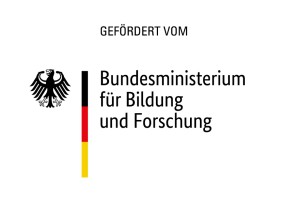


Young people with disabilities are highly affected by sexual violence in both the physical and digital world. Against the backdrop of inadequate sex education in the family and school environment, sexual education independent of adults via the media plays a central role for children and young people with disabilities. Compared to young people without disabilities, young people with disabilities do not have access to a wide range of media for sexual education and information. In recent years, however, the first educational media specifically for young people with disabilities on the topics of "love and sexuality" and "prevention of sexual violence" have been developed in German sign language, easy language, and simple language.
The transfer project "Educational media for sexual education and the prevention of sexualized violence for young people with disabilities" aims to summarize existing educational media from German-speaking countries in print and digital form for young people with disabilities, their teachers, and specialists in practice in a criteria-based, text- and image-based manner in order to increase their establishment in practice. The project addresses existing gaps in education and information by facilitating access to existing media-based educational resources through a digital summary. The digital overview is divided into two main topics:
1) Love and sexuality
2) Prevention of sexual violence
Each topic is divided into a criteria-based table, a brief description of the medium in text form, and visualizations in the form of images.


The research project is being carried out on a binational basis in cooperation between the Department of Education for the Hearing Impaired at Comenius University in Bratislava and the Chair of Special Education – Focus on Hearing and Communication, including Inclusive Education, at Ludwig Maximilian University in Munich.
The objectives of the project are:
The implementation follows a participatory, qualitative, and comparative research approach.

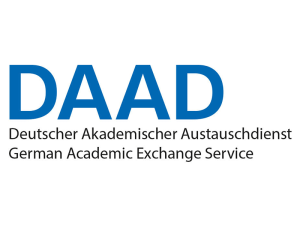

Media use among young people with hearing impairments – an adaptation of the JIM study (JIM-AhoJ)
At both national and international level, there is little data available on media use among the entire group of people with hearing impairments. In particular, the youth sector has not been examined or researched in any detail to date. However, media are extremely important for social participation and the fulfillment of individual needs in today's world. This has been demonstrated by various research projects on media use among people without hearing impairments. Some of these projects have focused specifically on young people. Most adolescents have access to various media technologies, own their own devices, and spend an average of more than three hours a day using them. These findings are confirmed by the Media Education Research Association Southwest, which has been collecting data on media use among young people aged 12 to 19 as part of the JIM study for over 20 years.
As part of a collaboration between the Media Education Research Association Southwest and Heidelberg University of Education, the JIM Study is being adapted for the target group of young people with hearing impairments. The aim is to collect data on media use among 14- to 21-year-olds with hearing impairments in Germany.
An online survey will be used to collect data on the following areas: leisure activities, internet use, (online) games, bullying, television, streaming, YouTube, and device ownership. The study will not only provide the first insights into media use among adolescents with hearing impairments, but may also yield important findings on prerequisites, opportunities, and barriers, which will serve as a starting point for further research.
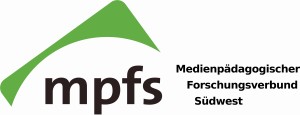
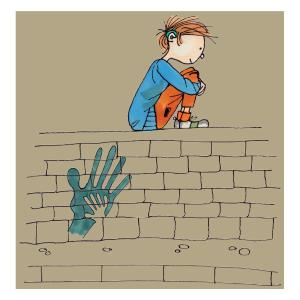
Child poverty at educational institutions with a focus on hearing and communication
The issue of child poverty in the context of hearing impairment has received little attention to date, both nationally and internationally. In view of the increasing number of socially deprived young people in Germany and the prevailing lack of research in the field of hearing impairment education, the aim of this study is to collect data for the first time on the incidence of poverty among children and young people in educational institutions with a focus on hearing and communication, and to record the effects of precarious living conditions on the lives of young people with hearing impairments.
The child-related poverty concept used in the AWO-ISS study served as the basic framework for the research methodology. A quantitative questionnaire survey was chosen in order to obtain nationwide findings on the frequency and manifestations of poverty among children and young people with hearing impairments. Poverty was measured in this study using a multidimensional approach based on the subjective assessment of predefined criteria by educational professionals. Of a total of 62 institutions in Germany specializing in hearing and communication, 20 participated in the survey. Data is available for 1,411 children and young people with hearing impairments.
The initial findings clearly demonstrate that children with hearing impairments are at significantly higher risk of poverty and show that intensive research and educational measures are urgently needed in this area.

Investigation of the effectiveness of a program to support hearing-impaired children in the executive system
The project was prompted by numerous research studies on the frequency of executive dysfunction in children and adolescents with hearing impairments. According to these studies, children and adolescents attending schools specializing in hearing support are four to five times more likely to be affected by executive dysfunction than children and adolescents without hearing impairments. Programs to promote executive functions in hearing-impaired children are lacking in both German-speaking and Anglo-American countries. In view of the high prevalence rate, the increasing inclusion of hearing-impaired children and adolescents in mainstream schools, and the key role that executive functions play in learning and development processes, programs to support hearing-impaired children are urgently needed.
The Hexe program is the first program designed to promote executive functions in children with hearing impairments. The Hexe program builds on scientifically proven influences on executive functions in childhood: these include mindfulness-based interventions and various sporting activities such as running, fitness training, martial arts, and yoga. These beneficial influences have not yet been incorporated into a curriculum that would enable implementation in schools: Hexe addresses this research gap by being specifically designed for children with hearing impairments, integrating all executive functions, and being based on a physical-cognitive approach. To test the effectiveness of the Hexe program, a quasi-experimental waitlist control group design with pre-, post-, and follow-up assessments is used. Four special education centers with a focus on hearing and a total of 60 hearing-impaired students are participating in the study. In the pretest phase, the students are tested using various neuropsychological test procedures. This is followed by the intervention in schools in the treatment group over a period of eight weeks. After the first intervention phase, there is a post-test phase before the intervention is carried out in schools in the waiting control group over a period of eight weeks. This phase is followed by another post-test phase and a follow-up.
Follow-up studies are planned to verify the effectiveness on a larger number of students and to assess the influence of physical and cognitive activity.
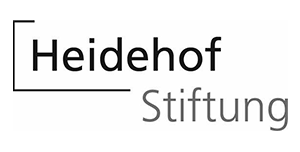

Social participation of primary school pupils with hearing impairments in inclusive education
Approximately 50% of students with hearing impairments in Germany are taught in inclusive educational settings – more than 90% of these students are taught individually. Since social participation is a key indicator for assessing the quality of school inclusion, this study examines the participation opportunities of primary school pupils with hearing impairments in appropriate educational settings and analyzes various influencing factors.
Using standardized questionnaires, elementary school teachers assess the social participation, quality of life, social and communication skills, behavioral problems, and experiences of bullying and victimization of elementary school students with hearing loss. The attitudes of the teachers surveyed toward inclusion are also recorded. Data sets are available for 126 students with hearing impairments between the ages of six and ten.
Overall, the primary school teachers surveyed rated the social participation of children with hearing impairment in primary school as positive. Social and communication skills and the presence of behavioral problems prove to be relevant predictors of this target group's opportunities for participation. Together with behavioral problems in children, opportunities for participation are a direct predictor of quality of life.
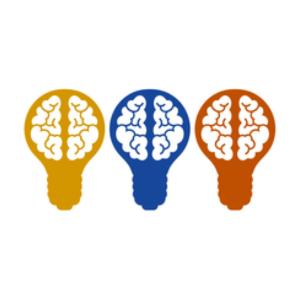
Executive functions in children with intellectual disabilities and/or hearing impairments
Executive functions (EF) comprise a range of higher cognitive processes. They control and regulate the interaction of attention and memory processes and are therefore understood as cognitive control functions. These include the abilities to inhibit impulsive reactions, flexibly shift the focus of attention, keep information mentally present in working memory, and plan courses of action. EF therefore play a central role in successful learning and problem solving. While the importance of executive functions in children and adolescents without disabilities has been extensively researched, this is not the case for children and adolescents with intellectual disabilities and/or hearing impairments. At the same time, initial research findings indicate a significantly higher rate of executive dysfunction in these target groups.
The aim of the research project is to compare the executive functions of children aged eight to ten with intellectual disabilities, hearing impairments, or combined support needs (n = 120). In addition, the influence of communication skills and physical activity on the development of the executive system will be examined. The Behavior Rating Inventory of Executive Function (BRIEF) in a German translation and the Communication Skills Indicator will be used as assessment tools. In addition, the physical activity of the participants will be assessed.